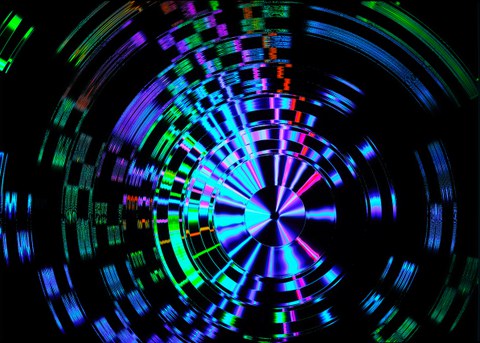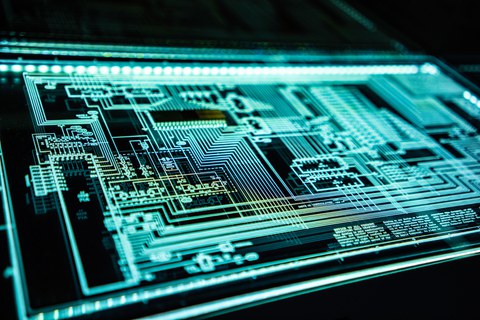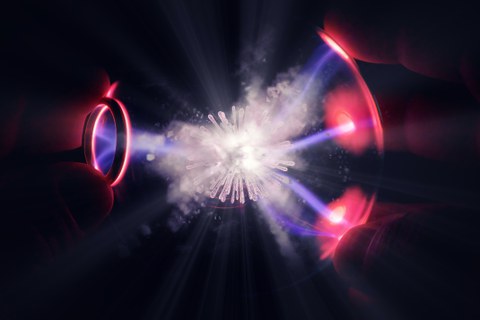OPEN POSITIONS
Projects
We offer exciting projects in the field of nanocrystals, nano-patterning, and biosensing. Here one can find available topics for possible thesis projects. The information on this page is, of course, subject to change, so feel free to contact us to arrange a meeting.
Open Master's Thesis Topics
Nanocrystals multicolor nanopatterns for advanced biosensing
Short Description:
Semiconductor nanocrystals (NCs) exhibit fluorescent that is a powerful tool for sensing. The fluorescent properties of NCs originate from quantum confinement that occurs when the size scale of the material becomes less than or equal to the characteristic length of the probing property, here the distance between electron-hole pair or exciton Bohr radius. The fluorescent of NCs results from recombining an electron-hole pair in which the photoexcited electron in the conduction band recombines with the hole left behind in the valance band. The energy of the emitted photon, i.e., wavelength or emitting color, depends on the NC band-gap that is determined by the size and the shape of the material. Multicolor patterning of NCs, fabrication of highly ordered multicolor patterns from NCs with different sizes/shapes, is an essential step in producing novel sensing platforms. In this project, the main task is to address the challenges of producing distinct NC patterns using the electron beam lithography technique.
Tasks:
1- Carry out literature research on nanopatterning of semiconductor nanocrystals
2- Establish an experimental plan for the fabrication of the PMMA template and optimize the nanopatterning parameters
3- Pattern-assisted stacking of red- and green-emitting semiconductor nanocrystals
Realization of 2D nanoplatelet nanophotonic circuits
Short Description:
Photonic integrated circuits are optical analogies of electrical circuits. They show great advantageous in miniaturization, robustness, reliability, and scalability with lower energy consumption, higher transport speed, and broader operation bandwidth.
In fully functional on-chip photonic integrated circuits, a combination of passive nanophotonic devices such as waveguides, ring resonators, gratings, directional couplers, MZ interferometers, Y-splitters, and active devices like on-chip microlasers, optical amplifiers, and photodetectors is required. Therefore, precise control over these elements' shapes, sizes, and locations via advanced fabrication techniques with high-resolution patterning capabilities is vital.
Semiconductor nanoplatelets simultaneously possess high optical gains and large refractive indices. These characteristics as well as their outstanding properties, such as solution processability, excellent photostability, wide wavelength tunability, and high quantum yield, make them suitable to be incorporated in passive and active nanophotonic devices.
Electrical characterization of a single nanosheet using the EBID technique
Short Description:
Details will be announced soon.
.
.
.
.
Towards 2D semiconductor nanoplatelet microlasers
Short Description:
Employing photons in the functional processing components is crucial to improving the data transmission rate and processing speed since the technology of electron-based integrated circuits and electronic devices is quickly approaching its fundamental limits. One of the main elements of a photonic circuit is waveguides, and coupling light into them via integrating a versatile optical source is profoundly desirable. Microlasers are the most reliable option that can generate coherent radiation and perform single-mode photon emission within a tiny footprint. Several optical feedback configurations, such as distributed feedback (DFB), Fabry-Perot cavity, and whispering gallery mode (WGM) lasers, have been fabricated using colloidal semiconductor nanocrystals as the optical gain medium. When using NCs as the gain material, the packing density becomes a crucial factor since the refractive index and the gain coefficient of the final layer are significantly affected by this parameter. Well-defined nanopatterns of colloidal NCs with high-density and close-packed structures can reach high gain values results in superior optical mode confinement. This project focused on fabricating a self-resonant microlaser based on a closed-packed micropattern of 2D semiconductor nanoplatelets.
Requirements:
We are looking for a top-level student in Materials Science or Natural Science with excellent verbal and written communication skills in English who wants to make a mark in science. Knowledge of working with colloidal semiconductor nanocrystals is an advantage. The candidate must be able to work independently and progress in the research work by own achievements. He/she must be creative in solving experimental challenges. A fundamental part of the work will be reporting the results. The candidate must be experienced in writing technical/scientific reports. It is expected that the candidate has a solid research-ethical approach. The primary workplace will be the Institute of Materials Science and Nanotechnology and Max Bergmann Center of Biomaterials Dresden.
Our group does not discriminate based on race, color, gender identity, religion, or national origin. The application from students with disabilities will be particularly welcome.
Benefits:
We offer exciting tasks in a robust international academic environment as well as an open and inclusive work environment with dedicated colleagues. The student will learn advanced nanofabrication techniques and experience multidisciplinary nanomaterial research and development.





